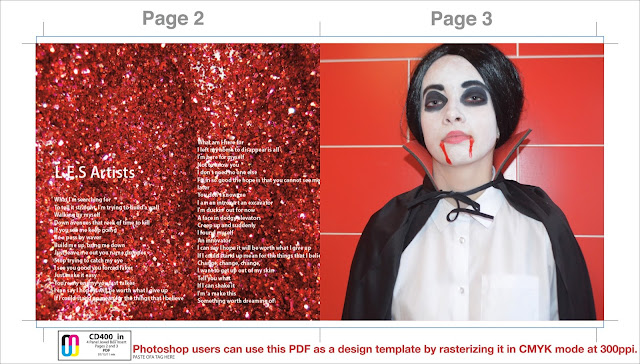An album cover is the front of the packaging of a commercially released audio recording product, or album. It can also be the primary image accompanying a digital download of the album, or of its individual tracks and in tangible discs, serves the purpose of a protective sleeve.
Album covers typically serve 3 main purposes:
- To advertise the product inside (the CD, the band, etc)
- Show artistic expressions and identity of the artist/band
- In some instances, to serve as an identifiable image associated with the artist/band
k
Album covers have long been an important aspect of musical history, along with iconic songs and music videos, there are also many iconic album covers. Not only are artists using album covers to promote their products, but are increasingly utilising album art as a means of creating political and social statements, intertextual references and artistic expressions.
Front covers of albums conventionally include:
- A simplistic colour scheme
- Allegory (hidden meanings as well as literally ones)
- Bold and simple fonts for the band name
- A similar font for the album title
Back covers usually include:
- Copyright and year
- Name of record company
- Similar design or same theme as front cover
- List of song titles, usually centred
The insert booklets typically include:
- The same colour scheme for the rest of the album
- Lyrics of the songs featured on the album
- Pictures of the band or their mascot
Spines usually have:
- The name of the band
- The title of the album
- The record company
Political album covers
Rage against the machine released this eponymous album in 1992. The front cover is a real photo taken of Buddhist martyr Thich Quang Duc, as he self-immolated in protest against the oppression that Buddhists were facing under Vietnamese rule in 1963. The album cover naturally sparked controversy for its graphic and upsetting content, but was argued to fit the theme of the band's political and socially related songs that featured a lot of angry "Uh!"s.
d

Sonic Youth released the album 'Goo' in 1990 which became incredibly popular quite quickly. The album cover used for Goo was an illustration of a paparazzi photo taken of Maureen Hindley and her partner David Smith on their way to the trial of the Moors murders, for which her sister Moira and her partner Ian Brady were imprisoned for.
Using album covers that encourage political discussion or cause controversy concerning protests or injustices, can serve primarily as an eye-catcher to audiences, attracting people to a product out of curiosity, but it can also promote an angle that a band wish to portray. For my album, I want a social message to come across, one concerning media stigma and its effects. I am inspired by political album covers as an influence for my ancillaries.
d















